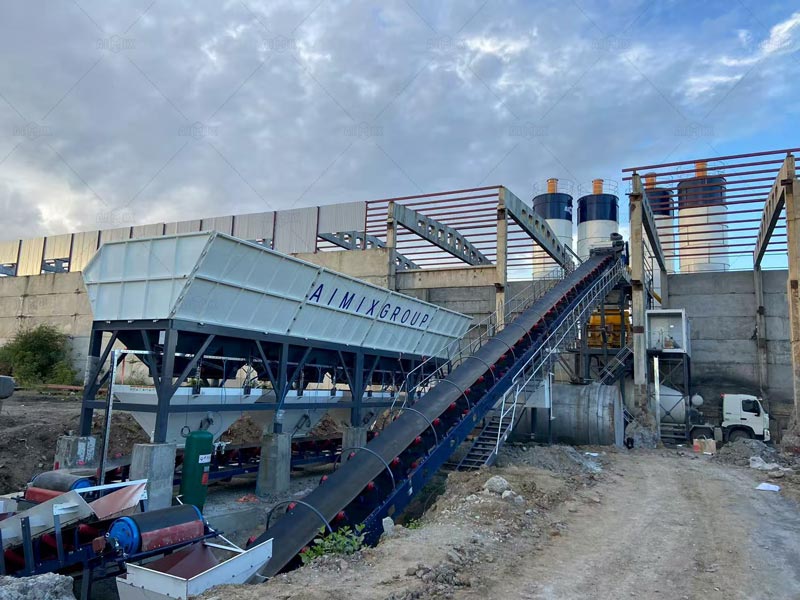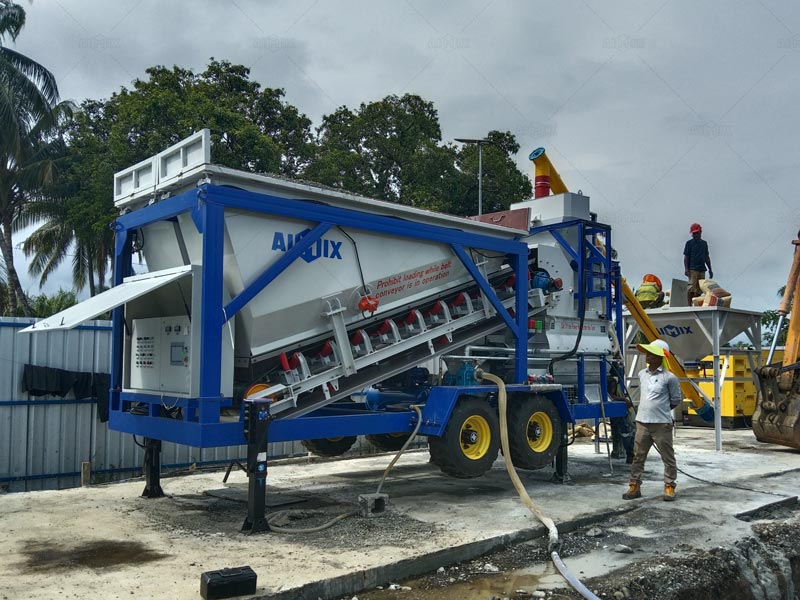
Peru’s construction industry continues to expand, driven by ambitious infrastructure projects, housing programs, and urban development. However, the country’s rainy season—especially between December and April—poses significant challenges for concrete production. Moisture, mud, and humidity can affect both the equipment and the quality of concrete. To ensure continuous, efficient, and high-quality production, adopting waterproof and dustproof construction solutions for every concrete plant for sale in Peru(venta de planta de concreto en Perú) is essential. These solutions are particularly relevant for contractors operating in remote or high-altitude areas where weather fluctuations are extreme.

Excessive humidity and rainwater can cause cement clumping and affect the water-cement ratio, resulting in inconsistent mixes. Aggregates stored in open areas may absorb excess water, altering mix proportions. This is a common issue for both stationary and mobile concrete plant setups that lack covered storage or waterproof barriers.
Modern concrete batching plants rely heavily on automated systems and sensors. During heavy rainfall, moisture may infiltrate electrical panels, sensors, and control units, leading to short circuits or inaccurate readings. Waterproof enclosures and IP65-rated connectors can prevent these malfunctions and reduce downtime.
Even during rainy periods, dust remains a challenge in Peru’s dry coastal zones. Combined with mud, it can clog moving parts, conveyors, and mixers, increasing wear and maintenance frequency. Implementing a dustproof design helps maintain smooth operations and extends component lifespan.
Building covered aggregate bins or silos helps prevent moisture absorption and ensures consistent aggregate quality. For smaller projects, a mini concrete plant(mini planta de concreto) can benefit from modular canopies or retractable covers that are easy to install and relocate.
Protecting the plant’s automation system is vital. All control panels, PLC units, and junction boxes should be sealed within waterproof enclosures. Cable entries must be properly grommeted, and all outdoor sensors should be weather-resistant. For mobile concrete plant users, portable waterproof housings ensure safe operation during on-site production.
Applying anti-rust and hydrophobic coatings to steel structures prevents corrosion and extends service life. Galvanized components, stainless-steel screws, and high-quality sealants help the plant withstand constant exposure to moisture and rainwater.
Proper site grading and drainage systems are fundamental. Concrete plants should be installed on elevated or sloped foundations with clear water flow channels. This prevents flooding around aggregate piles and mechanical areas, reducing the risk of water-induced failures.
Even in the rainy season, dust control remains essential for areas like conveyor belts, weighing hoppers, and mixers. Using misting systems, enclosed transfer points, and air filtration units can effectively minimize dust emissions and maintain environmental compliance.

Modern batching plants are increasingly designed for adaptability. A mobile concrete plant(planta de hormigon movil) offers the advantage of being easily relocated to higher ground or sheltered areas during heavy rainfall. Quick assembly structures and modular designs enable flexible adjustments based on site conditions.
Waterproofing solutions can be integrated with energy-saving systems. For instance, using efficient drainage allows rainwater collection for washing aggregates or cleaning equipment, contributing to water recycling and environmental goals.
Smart sensors and IoT systems enable operators to monitor moisture levels, equipment vibration, and power consumption remotely. Predictive alerts can help schedule maintenance before equipment issues escalate, ensuring stable operation even during unpredictable weather.
Peru’s rainy season doesn’t have to disrupt construction timelines. By implementing comprehensive waterproofing and dustproofing measures, contractors can safeguard productivity and ensure consistent concrete quality year-round. Whether investing in a large stationary setup or a compact mini concrete plant, adopting these practical solutions helps companies achieve greater efficiency, safety, and environmental compliance. In the face of challenging weather conditions, proactive design and maintenance are the keys to reliable and profitable operation for every concrete plant for sale in Peru.